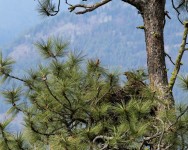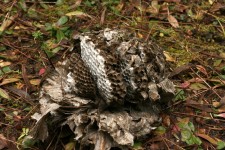Bald Eagle nests look huge. I found a Bald Eagle nest along the Kootenai River and wondered how big it was because my sense of estimating size isn’t great. Luckily, the Kootenai National Wildlife Refuge has a replica of a Bald Eagle nest so everyone can experience the size.
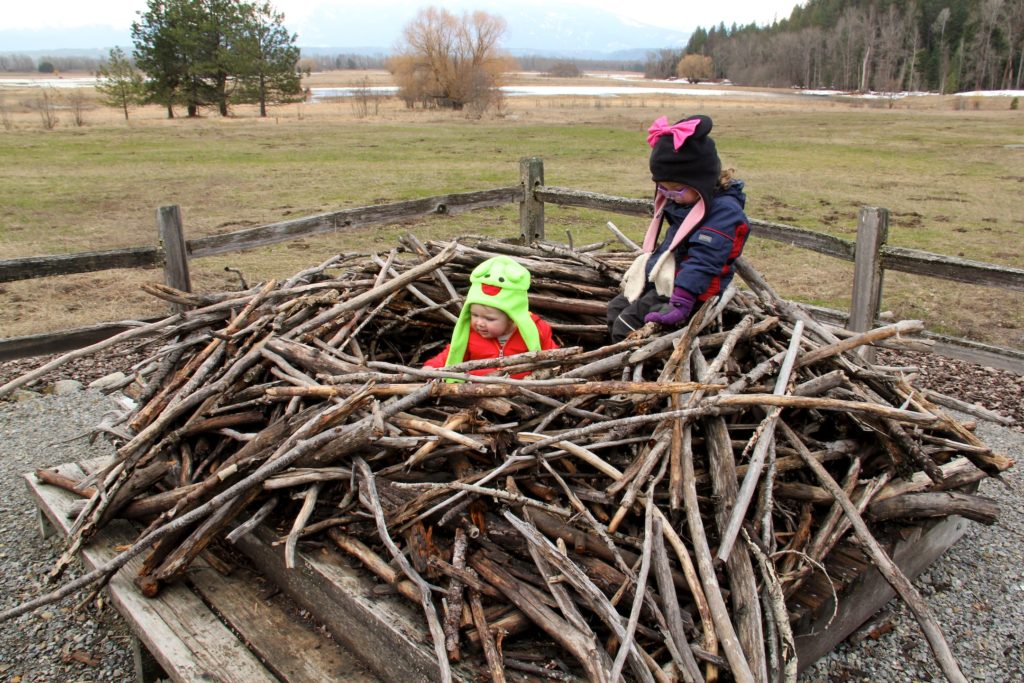
Bald Eagles build the largest bird nests in North America. The largest recorded nest in Florida was 9.5 feet in diameter, 20 feet deep and weighed almost three tons. On average, Bald Eagles build nests that are four to ten feet in diameter and two to eight feet high.
The size of Bald Eagle nests varies considerably because Bald Eagles reuse their nest. Every year Bald Eagles add new material which adds one to two feet of height.
The size is based on how much the tree can hold. Bald Eagles typically build a nest in the tallest living tree in their territory with suitable branches. However, the branch fork where they build their nest can only hold so much weight–an average Bald Eagle nest can weigh around one thousand pounds. Sometimes, the branch breaks off and sends the nest crashing to the ground.
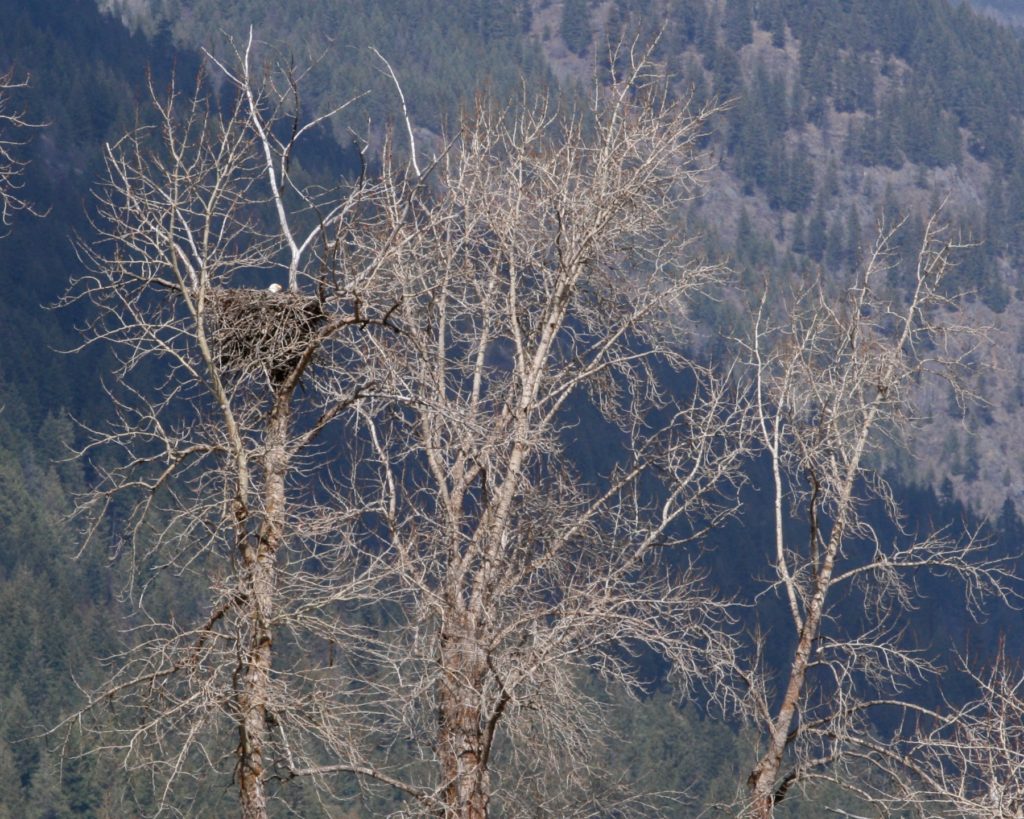
Bald Eagles spend one to three months preparing a nest. Both the male and female build the nest by using their feet or beak to carry sticks to the nest. They begin by picking up sticks on the ground near their nest and may even break off branches. They can carry larger sticks for up to a mile.
How much weight can an eagle carry? According to Alaska Department of Fish and Game, Bald Eagles weigh between eight and twelve pounds and from a standstill can carry three to four pounds. That equates to a 120 pound person carrying a forty pound stick.
As the eagles bring sticks to their nest, they interweave them together. As egg-laying approaches, the female will carefully shape the inner cup (called a bole) while the male brings sticks for the top.
The cup is about 20 inches in diameter and four to five inches deep. The cup is lined with grass, pine needles and plant stems. Finally, the female places soft material such as moss and downy feathers inside the cup to lay the eggs upon.
If the nest enables successful rearing of eaglets, the Bald Eagle pair will return to the nest next year. However, if nesting was unsuccessful or if the initial location wasn’t suitable, the pair will build a new nest. Some Bald Eagle pairs build two nests in their territory and alternate nests.
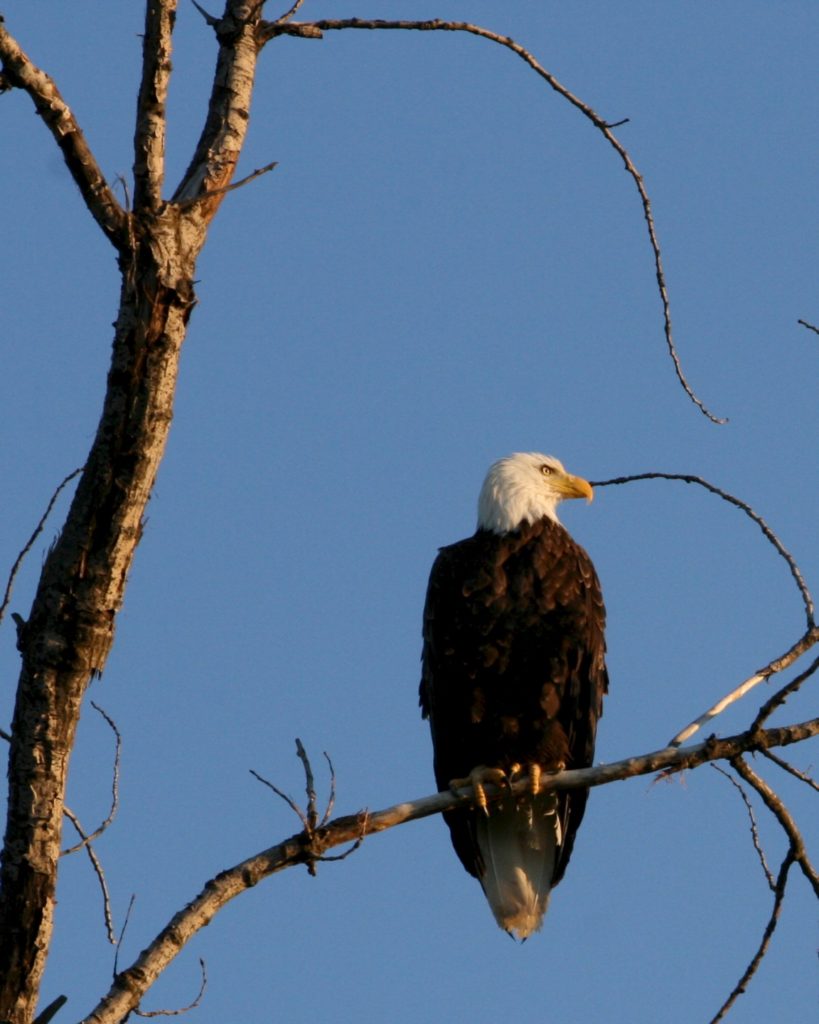
In areas without suitable trees, like some parts of coastal Alaska, Bald Eagles build nests on the ground, in snags, on cliff ledges or rock promontories. Not any tree or cliff edge will do. Bald Eagles need to nest near shallow water for drinking and fishing, and near trees with suitable perches for resting and hunting.
If all goes well, young eagles will leave the nest in 10 to 11 weeks.

